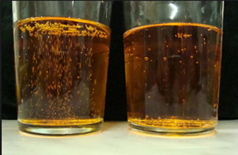It might not come as a surprise that doing a PhD is not always fun. One thing that gets me through those difficult, yet inevitable, times is the idea that the research I am doing could potentially make a difference for the better. I am sure this is true for many people involved in research fields that touch upon big societal questions such as health, climate change, economics, or education.
Surprisingly though, I realized a little while ago that I have given little thought to how relevant findings make their way to those who implement societal changes, such as policy makers. Usually scientists are trained to communicate their findings to other scientists, not politicians (or the general public, the people that empower the policy makers in the first place, but I will leave this important issue to one side for now). So what should scientific advice to policy makers look like? Is a brief summary of the research outcomes adequate or should a preference for the implementation of the findings be stated?
I started thinking about this after a discussion in our weekly lab meeting about an article published by Tamsin Edwards, a climate scientist. She describes how her refusal to give specific recommendations for political courses of action has sometimes been met with criticism – from environmentalists and members of the public, as well as fellow climate scientists. She gets accused of having a hidden political agenda, not fulfilling her role as an expert sufficiently, and failing to act and therefore delaying important and pending decisions. Even if some of these points are valid, a counter-argument could equally be made that openly stating political preferences could impact scientific impartiality and lead to the abuse of science to serve political agendas.
This complex issue is described in a model by Pielke, which characterizes four ways in which scientists can position themselves towards policy making. These roles, described in more details in Pilke’s book The Honest Broker: Making Sense of Politics and Policy are briefly summarized below, as well as their potential benefits and pitfalls.
The “pure scientists” do research for the sake of research only and have no further interest in the application of the findings. In reality, this type of “ivory tower” scientist is very rare today, especially in fields where findings might have a potential impact on society.
Pros: Maximal impartiality; because pure scientists are not interested in engaging in political decision-making, they are least likely to be biased towards one specific outcome.
Cons: Since pure scientists are not motivated to make scientific findings accessible, they are not facilitating the implementation of their findings, therefore making them useless for society. Even the publication of findings in scientific journals is often trapped behind expensive paywalls and therefore not accessible by interested members of the public.
 The “issue advocates” can be placed on the other end of the continuum of involvement with politics. They believe that participating in the political decision making process is an important part of their role as a scientist. The issue advocate is dedicated to a specific political agenda or outcome, and therefore more likely to narrow the view of the advice seeker to one specific course of action, in line with their own views.
The “issue advocates” can be placed on the other end of the continuum of involvement with politics. They believe that participating in the political decision making process is an important part of their role as a scientist. The issue advocate is dedicated to a specific political agenda or outcome, and therefore more likely to narrow the view of the advice seeker to one specific course of action, in line with their own views.
Pros: As the political opinion of the issue advocates is laid out openly, they might be less suspected of having a “hidden political agenda” (even though, in the case of “stealth advocacy”, the opposite could be the case as explained below). Acting as an expert with a specific goal in mind, an issue advocate might be more efficient in aiding policy makers with the fast implementation of findings.
Cons: Issue advocates might be more likely to be biased towards specific research outcomes (as they strongly favour one political outcome they are likely to be in a dilemma when their research findings do not support this outcome). Pielke describes the danger of “stealth issue advocacy”, which refers to a scientist hiding a political agenda while claiming to focus on the science. This usually results in scientific “facts” being manipulated for political debate. This behaviour can harm the credibility of scientific claims in general.
The “science arbiters” believe that science should not be directly involved in political decision making, but are willing to act as experts to inform policy making. Science arbiters focus on narrow, scientifically testable questions in order to stay removed from political debate.
Pros: More useful to society than “pure scientists”, as they are willing to act as scientific experts if specific questions are asked.
Cons: Science arbiters could be accused of being too passive, as they are only reacting to requests, but not actively engaging in sharing their knowledge.
 The “honest broker of policy alternatives” is, as compared to the science arbiter, actively seeking to integrate scientific findings in policy decision making by providing policy makers with clarification on specific questions and presenting several alternatives of political action. The honest broker is, in contrast to the issue advocate, not interested in a specific political outcome but in simply engaging with policy decision makers in order to integrate scientific knowledge into the decision making process. Tamsin Edward’s stance towards policy making could be described as “honest brokering”.
The “honest broker of policy alternatives” is, as compared to the science arbiter, actively seeking to integrate scientific findings in policy decision making by providing policy makers with clarification on specific questions and presenting several alternatives of political action. The honest broker is, in contrast to the issue advocate, not interested in a specific political outcome but in simply engaging with policy decision makers in order to integrate scientific knowledge into the decision making process. Tamsin Edward’s stance towards policy making could be described as “honest brokering”.
Pros: The honest broker is a great facilitator of scientific expertise to society.
Cons: The role of the honest broker seems difficult to maintain for one person alone as they are very actively engaged in politics but at the same time have to remain completely impartial to one specific political outcome and furthermore should examine the issue from several aspects. Pielke suggests that committees and bodies of several experts could act as an honest broker together.
Pielke further elaborates on which role might be most suitable, taking into account the degree of consensus on political values and the degree of uncertainty in scientific knowledge. Admittedly the different roles described are idealized and in reality might not quite fit into this abstract framework.
I personally found two important points to take away from this discussion: Firstly, it is crucial to understand that there are different options regarding how to discuss scientific findings with policy makers. Secondly, there is no perfect one-size-fits-all approach concerning which option to choose, as each option has advantages and disadvantages. I believe that reflecting on the issue and discussing it, privately, like we did in our lab group or, like Edwards, in an open debate, are a good start to finding a personal stance towards policy making. This might seem laborious and time consuming but, in my opinion, should be integral to all scientists, who pride themselves with doing science that matters.

























